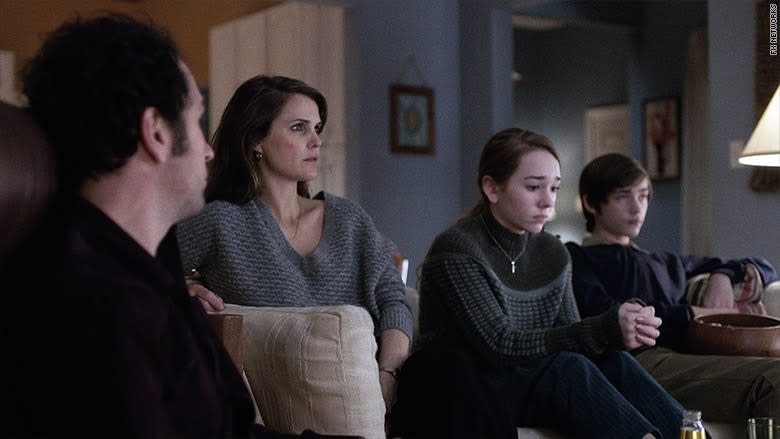'The Americans' Revisits 'The Day After' and Nuclear War

This week, The Americans will begin its Wednesday-night episode with the Jennings family sitting down on Nov. 20, 1983, to watch The Day After, a made-for-TV movie that was very much a real TV-movie. And when you see the shocked, speechless reactions of Elizabeth (Keri Russell), Philip (Matthew Rhys) and their two children (Holly Taylor and Keidrich Sellati) when the credits roll after they’ve watched a fictional version of the world incinerated by nuclear war, bear in mind: That’s pretty much exactly the way the real America reacted as well.
The TV movie, which aired on ABC and stars John Lithgow, Jason Robards, Steve Guttenberg, and JoBeth Williams, is about a conflict between the United States and the Soviet Union that erupts when the Russians send military troops into East Germany in an attempt to force the U.S. to withdraw from West Berlin. That conflict rapidly escalates into nuclear war, and the movie follows various Americans throughout the country, to show how people scattered across the U.S. find out about, and react to, the news of imminent annihilation. The Day After, written by Edward Hume and directed by the novelist Nicholas Meyer (The Seven-Per-Cent Solution), was most sophisticated in its depiction of how the media — TV and radio primarily in that pre-internet era — interpreted and disseminated news.
The Day After was tremendously controversial before it aired. It was thought that its airing might incite riots, or cause emotional harm to millions of citizens. ABC set up hotlines with counselors to deal with distraught viewers. President Ronald Reagan was shown the movie before it aired and later wrote that it “left me greatly depressed.” There was pressure within ABC as well. Local affiliates did not like The Day After’s controversial topic; the sales department had trouble selling ads because sponsors didn’t want to be associated with such a downbeat subject, and they thought it would do poorly in the ratings.
Boy, were they wrong: the overnight ratings were in excess of 100 million viewers, one of the biggest TV audiences of all time. Remember, this was a pre-cable time, when the big three networks — ABC, CBS, and NBC — ruled, and if you wanted to be part of the national conversation, you had to be in front of your TV when a show aired. (Nowadays, The Day After would be a 12-episode series dumped onto Netflix for binge-viewing, complete with Twitter blackout so no one could spoil the end of the world for you.)
For a completely fascinating, behind-the-scenes look into what went on before the movie aired in 1983, watch this Archive of American Television interview with the late Brandon Stoddard, then-president of ABC Entertainment, who talks about pressures from the left, the right, and the White House.
Once again, The Americans has folded a real event into its drama in a way that enhances the emotional stakes of the series. Obviously, for Elizabeth and Philip, our two Russian spies residing in America, The Day After presents a spooky scenario for what might play out if the cold war they are helping to conduct should turn white-hot. But the episode, which is also titled “The Day After” —written by Tracey Scott Wilson and directed by Daniel Sackheim — is also typical of the way The Americans uses historical touchstones in ways that also serve as metaphors for the domestic wars that threaten to melt down the Jennings family unit. Thank goodness daughter Paige has a subplot about getting driving lessons from her dad: Her yearnings to drive the family’s white Camaro are, in this context, welcome comic relief, if not without their own fraught tension. Pump the break gently, Paige!
The Americans airs Wednesday nights at 10 p.m. on FX.


